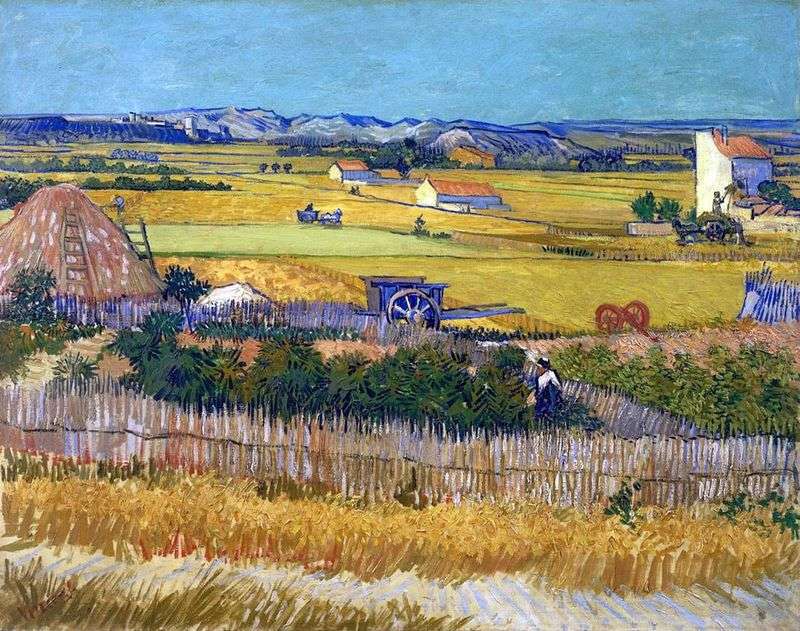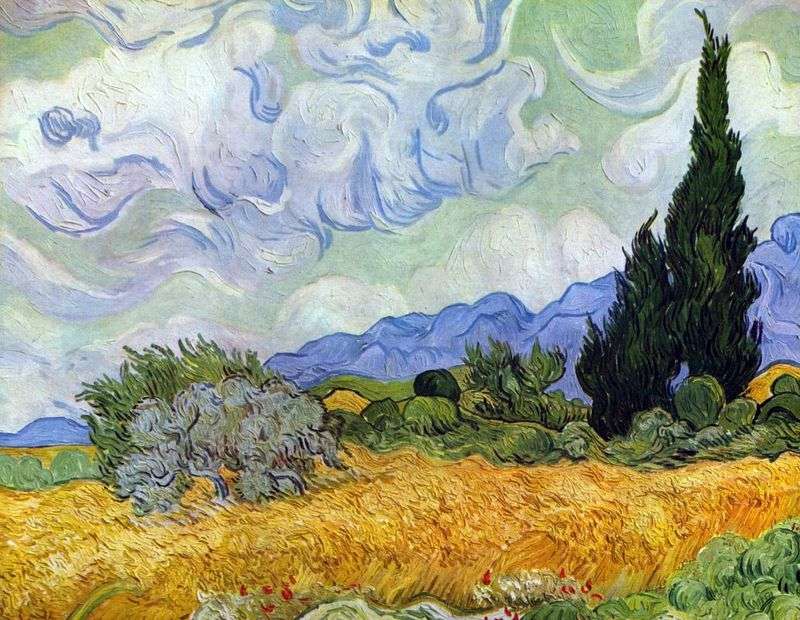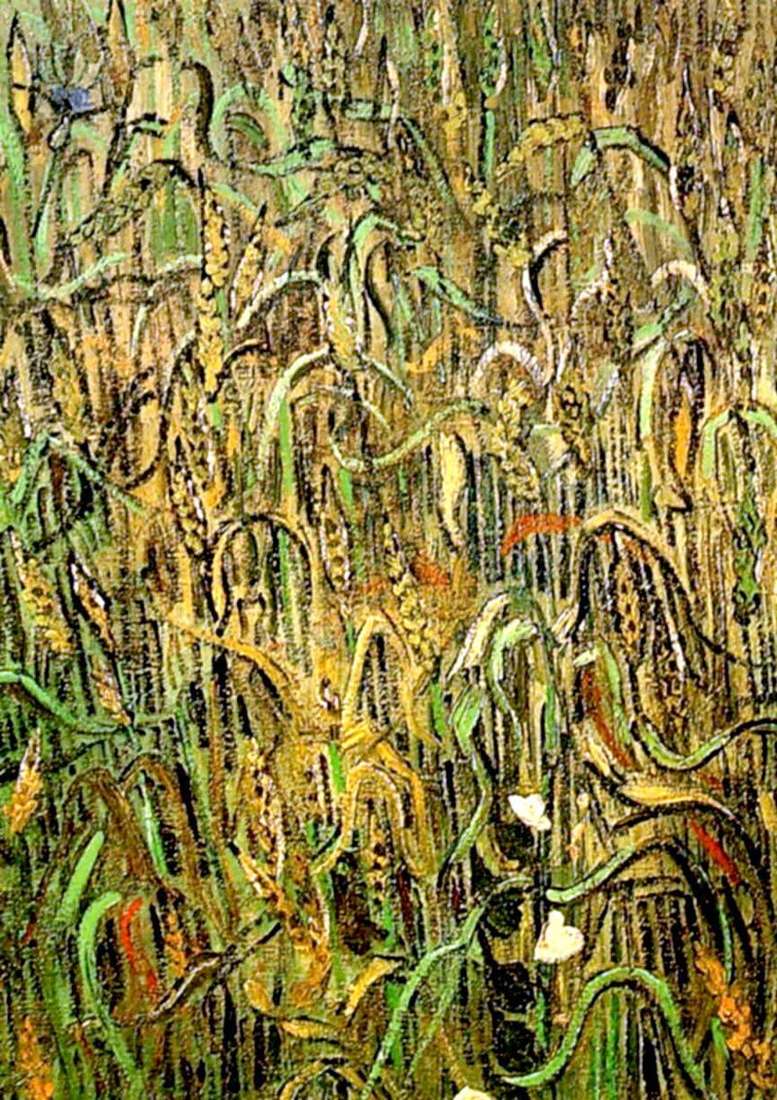
In Van Gogh, Van Gogh wrote many landscapes. He was fascinated by the vast expanses of grain fields that stretched around him. In the works of this period, he often depicts fields in an unusually extended format, 50×100 cm. The composition of these paintings is simple, but the sky and earth are depicted with utmost expressiveness. From letters to his brother it becomes clear that through painting, Van Gogh tried to convey the complex feelings that weighed upon him during this difficult period of his life.
The composition of this picture is two horizontal parts. An even rhythm expresses a calm mood. At the same time, the color scheme of the picture, based on a combination of dense cold tones, brings a hint of depression and sadness. The stormy sky, painted in rich shades of blue, hangs heavily over the ground. No subject and no figure violates the horizontal character of the composition, which makes this spacious wide landscape unusually devastated.
But, in addition to sadness and depression, Van Gogh conveyed in similar works a positive meaning. From the same letters it is known that he endlessly admired the healing effect for his soul, which exerted a distance away from the noise of urban life, alone with nature.
 Wheatfield with Crows by Vincent Van Gogh
Wheatfield with Crows by Vincent Van Gogh Peach in bloom by Vincent Van Gogh
Peach in bloom by Vincent Van Gogh Montmartre, road with sunflowers by Vincent van Gogh
Montmartre, road with sunflowers by Vincent van Gogh Harvest in La Cro, and Montmajor in the background (Harvesting) by Vincent Van Gogh
Harvest in La Cro, and Montmajor in the background (Harvesting) by Vincent Van Gogh Still life with pears by Vincent Van Gogh
Still life with pears by Vincent Van Gogh Wheatfield with cypresses by Vincent Van Gogh
Wheatfield with cypresses by Vincent Van Gogh View of the Over and the Church by Vincent Van Gogh
View of the Over and the Church by Vincent Van Gogh Wheat ears by Vincent Van Gogh
Wheat ears by Vincent Van Gogh